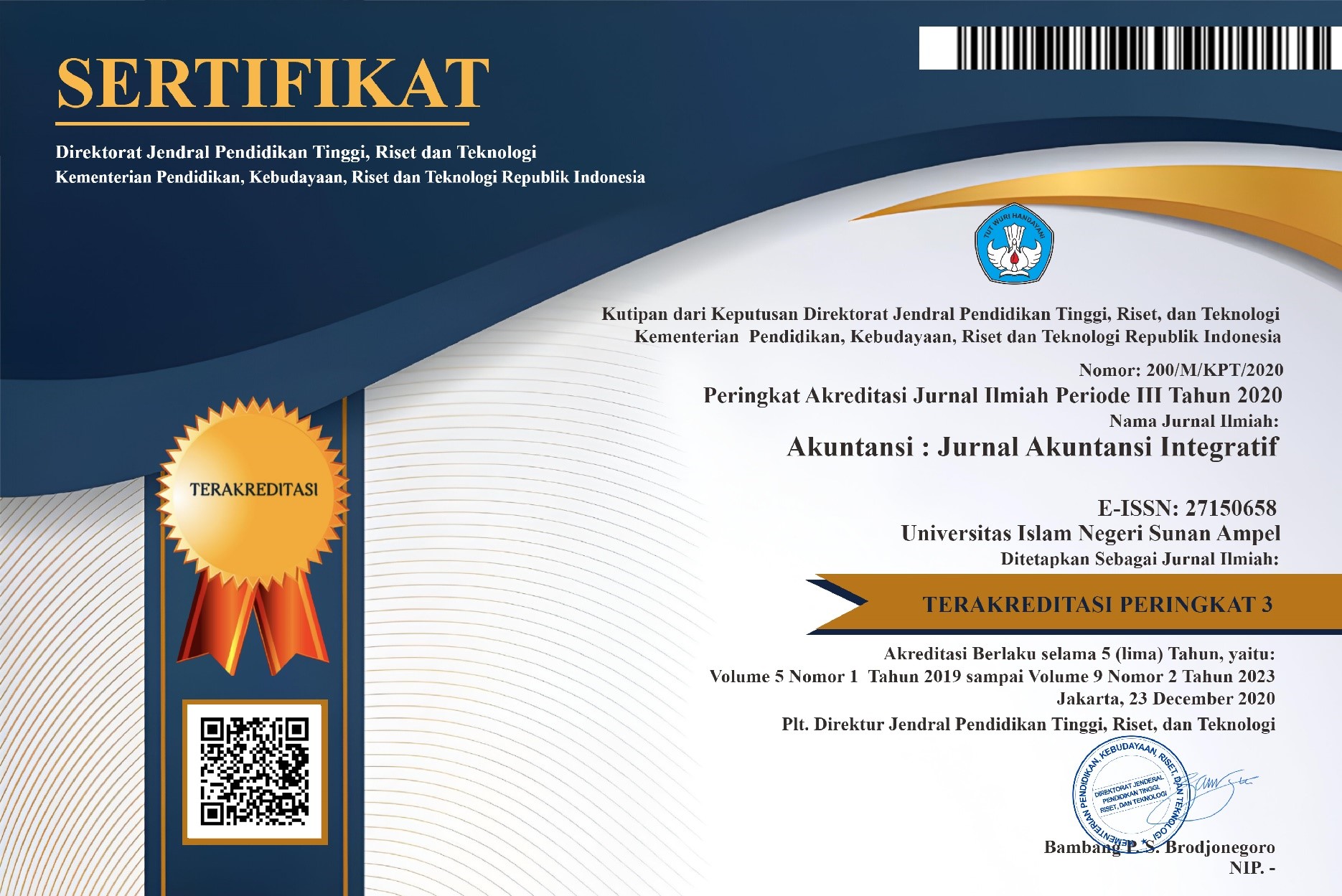Risk Management in Indonesian Local Government: A Literature Study
DOI:
https://doi.org/10.29080/jai.v10i1.1601Keywords:
Risk Management, Risk Awareness Culture, Local GovernmentAbstract
The primary objective of this research is to provide an in-depth understanding of the concept of risk management in Indonesian local governments, specifically focusing on the legal frameworks and cultural aspects surrounding risk awareness. The research employs a literature review methodology, utilizing articles, research journals, and 30 open-access local risk management regulations. Data analysis follows Miles and Huberman's qualitative approach, involving four key phases: data collection, data reduction, data presentation, and conclusion/review. The study reveals that some Indonesian local governments have established legal frameworks for risk management since approximately 2017. Key elements for effective risk management include a culture of risk awareness, robust risk management processes, effective communication and consultation, and sound assessment and reporting practices. The development of a risk-aware culture involves communication of risk understanding across all organizational levels, internalization of risk management in decision-making processes, and the enhancement of a control environment supporting a risk- aware culture. While this research sheds light on the progress of risk management in Indonesian local governments, there may be limitations inherent in the study, such as the scope of literature available and potential variations in local practices. The implication of these findings suggests the need for further research to delve deeper into specific regional contexts and challenges that may impact the effectiveness of risk management.
Downloads
References
Arikunto, S. (2013). Prosedur Penelitian Suatu Pendekatan Praktik. Edisi Revisi. Jakarta: PT. Rineka Cipta.
Badan Standardisasi Nasional. (2018). SNI ISO 31000:2018 Manajemen Risiko. Jakarta: Badan Standardisasi Nasional.
Danandjaja, (2014). Metode Penelitian Kepustakaan. Antropologi Indonesia.
Hadi, W. A. (2017). Pengembangan Sistem Manajemen Risiko di Badan Perencanaan Pembangunan Daerah (Bappeda) Kota Bontang Berdasarkan Kerangka ISO 31000.
Kanchu, T., & Kumar, M. M. (2013). Risk Management in Banking Sector - An Empirical Study.International Journal of Marketing, 2(2), 145–153. Retrieved from www.indianresearchjournals.com
Oktapiani, F., Rosmiati, M., Indrawati, L. (2021). Implementasi Manajemen Risiko Dalam Upaya Mewujudkan Prinsip-Prinsip Good Governance Pada Pemerintah Daerah Kabupaten Bandung Barat. Indonesian Accounting Research Journal, 1(2), 378-385.
Peraturan Pemerintah Republik Indonesia Nomor 60 Tahun 2008 tentang Sistem Pengendalian Intern Pemerintah.
Peraturan Menteri Keuangan Nomor: 191/PMK.09/2008 tentang Penerapan Manajemen Risiko di Lingkungan Departemen Keuangan.
Sugiyono. (2018). Metode Penelitian Kuantitatif, Kualitatig, dan R&D. Bandung: Alfabeta.
Surat Edaran Menteri Pekerjaan Umum dan Perumahan Rakyat Nomor 04/SE/M/2021 Tahun 2021 tentang Pedoman Penerapan Manajemen Risiko di Kementerian Pekerjaan Umum dan Perumahan Rakyat.
Susilo, L. J., & Kaho, V. R. (2010). Manajemen Risiko Berbasis ISO 31000 untuk Industri Non Perbankan.
Suwanda, D., Junjunan, B. A., Affandi, A., & Rusliati, E. (2019). Manajemen Risiko Pengelolaan Keuangan Daerah Sebagai Upaya Peningkatan Transparansi dan Akuntabilitas Publik. Bandung.
Tjahjadi, B. (2011). Hubungan Sistem Manajemen Risiko Dengan Ketidakpastian Lingkungan dan Strategi serta Dampaknya Terhadap Kinerja Organisasi. Majalah Ekonomi, XXI(2), 142–154.
Downloads
Published
How to Cite
Issue
Section
License
Copyright (c) 2024 Mirna Amirya, Gugus Irianto

This work is licensed under a Creative Commons Attribution-ShareAlike 4.0 International License.









